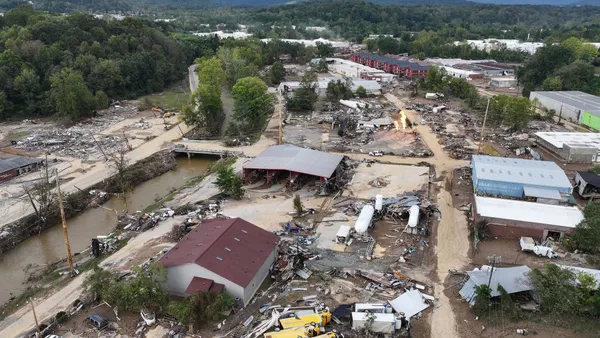Dive Brief:
- OSHA has published a final rule concerning who may accompany agency inspectors, employers and workers on a workplace walkaround or inspection. The rule, published on April 4, will go into effect May 31.
- The updated language reinstates a long-standing OSHA practice allowing employees to select a third party to accompany a walkaround. Under OSHA guidelines, both employers and employees have the right to have a representative accompany OSHA inspectors. A 2017 court case found that allowing third parties to represent employees was a “valid interpretation,” but not consistent with the language of the rule as written.
- The agency announced the rule proposal in August. At the time, OSHA said the change would improve inspections by increasing worker representation and making it easier for compliance officers to obtain more information about workplace safety.
Dive Insight:
Under the rule, an employee-approved third party member could potentially be a union representative, even on a non-union jobsite. That is a major point of concern for employer groups, who disapproved of the rule change in August.
“Now, construction employees and employers could face serious safety concerns because the final rule has the potential to allow anyone on a jobsite,” Greg Sizemore, Associated Builders and Contractors vice president of health, safety, environment and workforce development said in a March 29 statement. “There simply is no business case for this final rule and no benefit during a compliance inspection.”
Sizemore went on to say “OSHA is injecting itself into labor-management disputes and casting doubt on its status as a neutral enforcer of the law,” as well as raising concerns on lack of clarity over liability should an employee representative get injured during an inspection.
On the other hand, Anthony Abrantes, assistant executive secretary-treasurer for the Eastern Atlantic State Regional Council of Carpenters, said the rule underscores the need for employees to have the necessary support and advocacy in an inspection setting.
“By clarifying employees' rights to authorize a representative, this rule empowers workers to assert their safety concerns confidently, fostering a culture of accountability and protection in the workplace,” Abrantes told Construction Dive.
What will the rule mean for contractors?
“I don’t see this one as a huge deal unless you are working on a highly confidential site,” said Dan Rosenberg, a Chicago-based lawyer and principal at Much Shelist, pointing out the change reverts to how the law was interpreted under the Obama administration.
“Jobsites are often walked by lots of different people, and adding one more doesn’t seem that big of deal to me from a practical perspective,” Rosenberg said. “Of course the visitor should be required to use PPE and conduct the walk in a safe manner, but practically the risk of an independent person ignoring safety while walking a site with OSHA seems low.”














